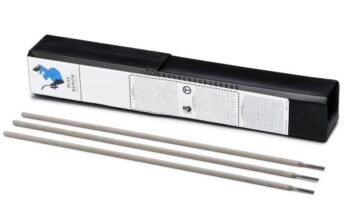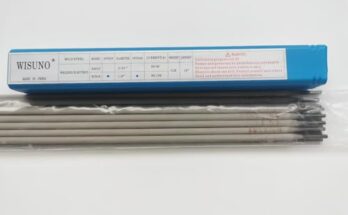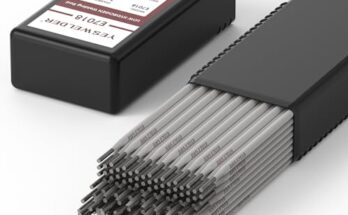Need to improve your stick welding skills? Learning how to reduce spatter when stick welding is crucial for cleaner welds, better efficiency, and improved safety. This guide will teach you various techniques and strategies to significantly minimize spatter, improving your overall welding performance.
Welding spatter refers to the
tiny molten metal droplets that are ejected from the welding arc during the stick welding process. This spatter adheres to the base metal, the surrounding area, and even the welder’s protective gear. It’s not just an aesthetic issue; excessive spatter can weaken the weld, create porosity (small holes), and make cleaning up after welding a time-consuming task. Think of it like an uncontrolled spray of molten metal. Instead of a smooth, consistent weld bead, you get a rough surface littered with these tiny, often sharp, metal bits. These bits can cause significant issues if they get embedded in the finished weld, reducing its overall strength and integrity. Controlling spatter is key to producing high-quality welds consistently. The less spatter, the better the weld, both visually and structurally. In my years of welding, I’ve seen firsthand the difference that proper spatter control makes. A project that previously took hours to clean could be completed in minutes with improved techniques.
Why is Spatter Control Important?
Beyond the aesthetic concerns, spatter presents several significant problems. First, it weakens the weld. The spatter often doesn’t properly fuse with the base metal, leaving weak points in the structural integrity of the weld. This is especially critical in applications where strength and reliability are paramount, such as structural steel welding. Second, spatter can cause porosity in the weld. These tiny holes in the weld reduce its strength and make it more susceptible to corrosion. Imagine a sponge compared to a solid block of metal – the sponge is considerably weaker. Similarly, a weld full of pores is weaker than a solid, spatter-free weld. Third, cleanup becomes significantly more challenging. Removing spatter from intricate welds or delicate surfaces can be tedious and time-consuming. Imagine trying to remove small bits of molten metal from a finely detailed part; it’s a difficult task that requires extra care and attention. Finally, excessive spatter poses a safety hazard. Those molten metal droplets can cause burns or injuries if they land on skin.
Factors Contributing to Spatter
Several factors contribute to spatter formation. The type of electrode used plays a significant role, with some electrodes being more prone to spatter than others. The welding current, electrode angle, arc length, and surface preparation of the base metal all influence the amount of spatter produced. Inconsistent travel speed during welding can exacerbate the issue. For instance, using a low-quality electrode, like one with a damaged coating or an improper diameter for the application, could lead to significantly increased spatter. Similarly, an incorrectly adjusted welding current – too high or too low – can disrupt the arc stability and increase spatter. Improper cleaning of the work surface also introduces contaminants that worsen spatter, much like cooking with dirty pans causes uneven heating and sticking. Years of practice have taught me to pay attention to these details for consistent, high-quality welds.
Techniques for Reducing Spatter
Optimizing Welding Parameters
Properly setting your welding machine is critical in minimizing spatter. The correct current is crucial; too much current can cause excessive spatter, while too little leads to weak welds and poor penetration. The electrode angle is equally important. Maintaining the correct angle (generally around 15-20 degrees) ensures proper arc stability. The arc length, or distance between the electrode and the workpiece, needs to be consistent to maintain a stable arc. Too short an arc leads to excessive spatter, while too long an arc creates inconsistencies in the weld. Imagine a stable flame on a gas stove – you wouldn’t want the flame too close or too far from the pan. Similarly, a stable arc is critical for smooth welding without spatter. Using the correct electrode for the material being welded also minimizes spatter. Using the incorrect diameter can cause issues with the arc’s stability, influencing the spatter level.
Proper Electrode Handling
The way you manipulate the electrode significantly affects spatter. Avoid sudden movements or jerky motions that disrupt the arc. Keep a consistent travel speed and maintain a smooth, steady hand. Imagine drawing a smooth line instead of a jagged one – the same principle applies to electrode manipulation. This steady hand requires practice and patience. The technique itself can take some getting used to and demands a deft hand for the most part. I have seen newcomers struggle with excessive spatter simply because of their handling technique. Regular practice can help improve this. Furthermore, ensure the electrode is properly coated and free from damage. A damaged coating can disrupt the arc and increase spatter, just like a faulty wire in an electrical appliance can cause flickering or sparks.
Surface Preparation
Preparing the base metal for welding is essential for minimizing spatter. Thorough cleaning of the surfaces to be welded is crucial. This involves removing any rust, paint, grease, or other contaminants. These contaminants can disrupt the arc and create inconsistencies in the weld. Imagine trying to weld two pieces of wood with a layer of paint in between – it won’t work well. Similarly, clean metal is essential for strong, spatter-free welds. Also, ensure the surfaces are properly ground and free from any sharp edges or imperfections, promoting proper fusion and reducing the chance of spatter. These small details can make a big difference in the overall weld quality and appearance. I’ve had countless occasions where improper surface preparation has directly led to increased spatter.
Advanced Techniques and Considerations
Electrode Selection and Types
Different electrodes exhibit varying degrees of spatter. Low-hydrogen electrodes, for instance, are generally known for producing less spatter compared to some other electrode types. Understanding the specific properties of each electrode type and matching them to the specific application is key to controlling spatter. Certain electrodes have coatings designed to minimize spatter, and selecting the correct type for the base material being welded is vital for quality. Much like choosing the right paint for a particular surface, selecting the correct electrode will lead to better results.
Shielding Gas and its Influence
While stick welding isn’t typically associated with shielding gas like MIG welding, the surrounding environment can still influence spatter. Welding in a drafty area can disrupt the arc and increase spatter. Welding in a well-ventilated space with minimal airflow helps create a more stable arc, reducing the chances of spatter. Think of it like a candle flame in a breeze – the flame flickers and sputters. Similarly, a stable welding environment contributes to a more stable arc.
Grounding and Its Effects on Spatter
A poor ground connection can significantly increase spatter. Ensure your ground clamp is securely attached to a clean, conductive surface, making a good electrical connection. A loose or dirty ground clamp can lead to arc instability and increased spatter. Imagine trying to start a car with a loose battery terminal; it’s difficult and can cause issues. Similarly, a strong ground connection is crucial for consistent welding.
Troubleshooting Common Spatter Issues
Excessive Spatter: Causes and Solutions
Excessive spatter often points to issues with the welding current, electrode angle, arc length, or surface preparation. Review these parameters and make adjustments accordingly. If the problem persists, consider changing electrode types. This should help reduce the amount of spatter. Furthermore, ensure the electrode is properly coated and not damaged.
Inconsistent Spatter: Identifying the Root Cause
Inconsistent spatter may be caused by variations in the travel speed, inconsistent electrode angle, or dirty base metal. Maintaining a consistent speed and angle helps reduce spatter.
Spatter Sticking to the Weld: Mitigation Strategies
Spatter that sticks to the weld often indicates poor fusion or improper electrode technique. Focus on maintaining a steady hand and consistent electrode angle and travel speed.
Safety Precautions When Stick Welding
Personal Protective Equipment (PPE)
Always wear appropriate PPE when stick welding, including a welding helmet with a shade appropriate for the amperage being used, welding gloves, a welding jacket, and safety glasses. Welding spatter can cause serious burns, and proper protection is paramount.
Workplace Safety
Ensure the welding area is well-ventilated and free from flammable materials. Have a fire extinguisher readily available. Clear the area around your welding station to prevent accidents.
Proper Cleanup Procedures
After welding, always clean the area thoroughly to remove any spatter. Use a wire brush or grinder to remove stuck spatter. Dispose of any waste materials properly.
Frequently Asked Questions
What is the best electrode for minimizing spatter?
While there’s no single “best” electrode, low-hydrogen electrodes are often known for producing less spatter than others. The optimal choice depends on the base material and the specific welding application. Learn more about electrode selection for different materials.
How does amperage affect spatter?
Too high an amperage can cause excessive spatter due to instability in the arc, while too low an amperage can result in inconsistent welds and still lead to some spatter. Finding the sweet spot for the material and electrode is crucial.
Can surface preparation completely eliminate spatter?
While proper surface preparation significantly reduces spatter, it doesn’t eliminate it entirely. Other factors, like electrode handling and welding parameters, also play a significant role.
What if my spatter is still excessive after adjusting parameters?
If you’ve adjusted all parameters and spatter persists, consider checking your ground clamp, ensure it’s clean and making proper contact. Also, inspect your electrode for damage or improper coating.
How can I clean spatter effectively after welding?
Use a wire brush, grinder, or specialized spatter removal tools to safely remove spatter. For delicate surfaces, use a softer cleaning method, such as a stiff nylon brush.
Is spatter harmful?
Yes, molten spatter is extremely hot and can cause serious burns if it comes into contact with your skin. Always wear appropriate personal protective equipment (PPE).
Why is spatter a concern in structural welding?
In structural welding, spatter can compromise the weld’s strength and integrity, creating weak points that could lead to structural failure. Minimizing spatter is paramount for ensuring safety and durability.
Final Thoughts
Mastering how to reduce spatter when stick welding requires attention to detail, consistent practice, and a good understanding of the underlying principles. By carefully managing your welding parameters, electrode handling, surface preparation, and by selecting the right equipment, you can drastically reduce spatter and improve your welding skills. Remember, safety is paramount, always wear appropriate PPE, and take your time to develop a steady and consistent welding technique. With patience and practice, you will see significant improvements in the quality and efficiency of your welds. Start practicing today and see the difference it makes in your welding projects!


